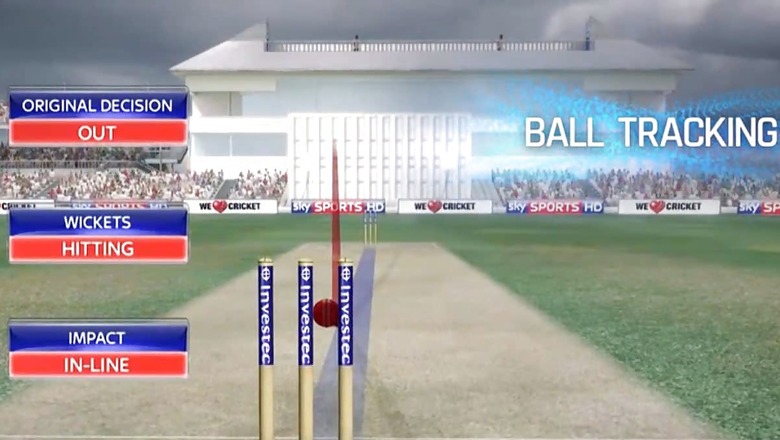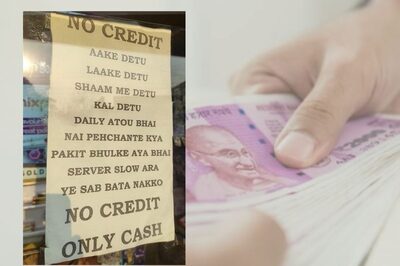
views
South Africa and Pakistan might have produced the first edge-of-the-seat contest of the 2023 ODI World Cup but the world of cricket is busy debating the controversial ‘umpire’s call’ rule which, as it has in the past, divided opinions.
A couple of match-defining LBW calls were made based on umpire’s call which have led to lot of frustration.
Rassie van der Dussen was adjudged LBW based on umpire’s call despite the South African going for the review to reverse the on-field decision.
ICC World Cup: Schedule | Results | Points Table | Most Runs | Most Wickets
Later on, it was the turn of Pakistan cricket team to be at the receiving end of the rule when Tabraiz Shamsi was given not out after a loud appeal for lbw by Haris Rauf and co and the review they took didn’t bear the result they were hoping for thanks to, again, the umpire’s call.
So what is the umpire’s call?
Before getting into the technicality, let’s understand the process that ball tracking technology follows to take call on LBW decisions.
Pitching Zone: It is a two dimensional area on the pitch between both sets of stumps with its boundaries consisting of the base of both sets of stumps and a line between the outside of the outer stumps at each end.
Impact Zone: It is a three dimensional space extending between both sets of stumps to an indefinite height vertically and with its boundaries consisting of the base of the stumps and the outside of the outer stumps at each end.
Wicket Zone: It is a two dimensional area with its boundaries consisting of the outside of the outer stumps, the base of the stumps, and the top of the stumps
ICC Definition of an Umpire’s call
As per the ICC playing conditions, “Umpire’s Call is the concept within the DRS under which the on-field decision of the bowler’s end umpire shall stand, which shall apply under the specific circumstances… where the ball-tracking technology indicates a marginal decision in respect of either the Impact Zone or the Wicket Zone.
Nasser Hussain on how umpires call work https://t.co/dsk0s6Fd68 pic.twitter.com/FidNpJgrEm— Chaitanya (@chaitu_20_) October 27, 2023
It further adds, “Some part of the ball was inside the Impact Zone, but the centre of the ball was outside the Impact Zone, with the further sub-category of ‘Umpire’s Call (off side)’ where the centre of the ball was to the off side of the Impact Zone and the bowler’s end umpire communicates to the third umpire that no genuine attempt to play the ball was made by the batter.”
In simple terms, if there’s a doubt whether the ball would have actually hit the stump (when it’s marginally hitting a stick or bails) then then the original call made by the on-field umpire will stay.
What happens to the review?
A team doesn’t lose its review for an ‘umpire’s call’ verdict.
Why is it controversial?
Several players including the legendary Sachin Tendulkar, the late Shane Warne and others have in the past expressed their displeasure at the rule. As per them, if the ball has hit the stump then there shouldn’t be a question of whether it’s marginal or not, it should be out.
I suspect it is time to explain “Umpire’s Call” again. After the ball strikes the pad, what you see is a projection of where the ball might have been, it isn’t the actual ball because that has met an obstruction. If more than 50% of the ball is projected to hit the stumps, you…— Harsha Bhogle (@bhogleharsha) October 27, 2023
In a video Tendulkar had said, “I am not convinced with the DRS rule at all. Once you have gone upstairs to the third umpire then the on-field umpire’s decision should not come into the picture at all. It doesn’t matter whether the ball is hitting 10 per cent or 15 per cent or 70 per cent because when you get bowled, none of this matters. Even if the ball is just clipping the bail and the umpire has given not out, that decision should be overturned when they have referred to the third umpire. It is too confusing and is unfair to bowlers also.”



















Comments
0 comment